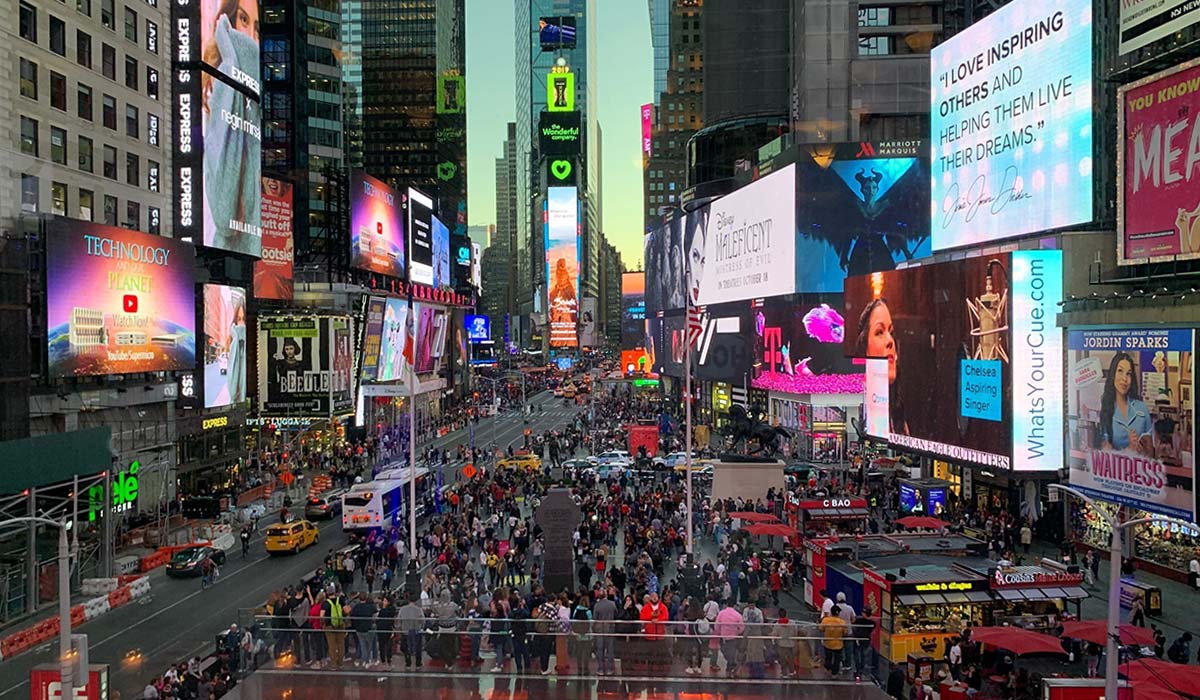By: Dennis Nikles / VP of Media & Analytics
The adage, “What’s old is new again,” couldn’t be more accurate for the outdoor medium. I’ve often heard outdoor was the first advertising vehicle known to man. While historians say the first known billboard was in ancient Egypt, you could say it all actually started in the 1790s, when lithography, a method of printing using oil and water, was invented, making the creation of posters possible.
When I started in the advertising industry some 30+ years ago, outdoor was basically an awareness vehicle used to reinforce the ads you placed on TV, radio and newspaper. They were also used to direct an individual to a specific place – “Located 1 mile ahead on the left.”
Out-of-home options were also limited. You essentially had sandwich boards, bulletins, posters, taxi cabs and buses. Nothing fancy. Certainly not the plethora of options we have today, ranging from baggage claim dioramas to plastic airport security bins, all the way to building Wallscapes, Pedicab panels, stair risers in subways or even mobile digital boards. You can even “rent” your body out to advertisers, if you’d like. The placement possibilities are endless. https://www.pinterest.com/redskif/body-advertising/
Out-of-home placements aren’t the only thing that has advanced. Back in the day, we only had traffic counts to determine the efficiencies of outdoor buys, relying on how many vehicles drove on a road, as determined by the department of transportation. These counts were called “daily effective circulation” or DECs. Even then, the DEC estimates assumed 1.5 people per car and not all roads were measured. Surely a lot of room for improvement!
The first significant change in the industry occurred in 2010 when the Traffic Audit Bureau (TAB) unveiled their “Eyes On” measurement technology. The platform used a combination of data from technology and research partners to provide specific geographic and audience data. This new measurement combined board location with the amount of time it was visible to identify how many eyeballs were actually engaged with a specific ad. While this was a huge improvement over DEC figures, it’s nothing compared to what’s happening right now.
The OOH industry is in the process of making its most significant strides in measurement ever. Geopath, the non-profit association responsible for providing the universal currency, is updating its methodology. This new method of measurement utilizes advanced location data that is much more granular than the 2010 system. While the initiative is currently a work in progress, it will utilize precise locations for all inventory that’s in the Geopath database. It will also incorporate information garnered from connected cars and mobile location data. The end result will enable advertisers to better target their audiences. As with any major currency changes, it will affect the delivered impressions. Some will be higher, and some will be lower. But at the end of the day, I’m ready for a more accurate read on who I can target and reach.
Enhanced measurement isn’t the only thing that’s making OOH new. We are taking how we buy the medium to a whole new level by adding a digital component and I’m not talking about digital boards. We are able to Geofence the boards we’re buying, along with competitor locations, to reach our prospects on their mobile devices. Using this strategy, we are able to retarget individuals that have seen our boards over the next 30-days. This is a great way to add both reach and frequency to our efforts and at a modest cost. To top it off, we can also get a foot traffic study from our outdoor vendors at the end of the campaign. Wow – definitely a little more targeted and accountable than the old DEC buys from the past! So, what was once considered a non-sophisticated, old medium is now very sophisticated and much more contemporary and new. Not bad for a medium that’s been around since the Egyptian times!
